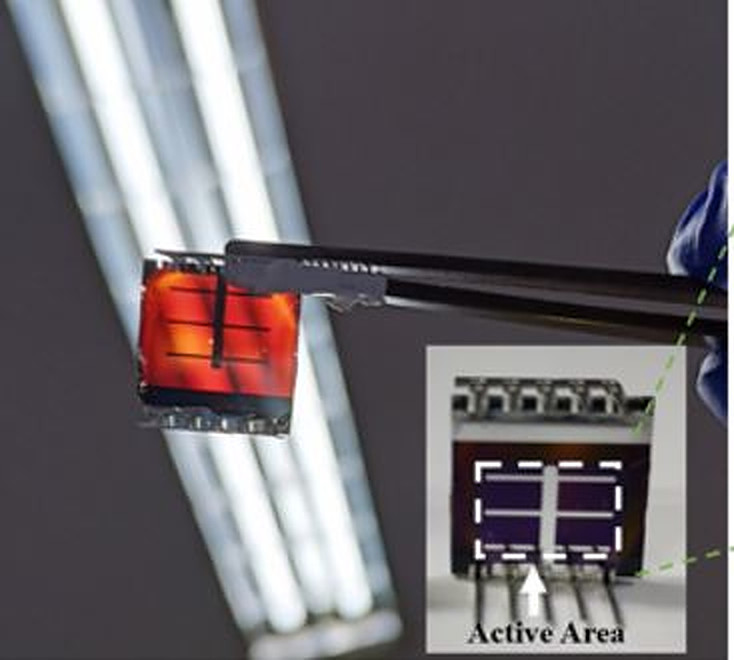From pv magazine Global
Researchers at the Indian Institute of Technology Bombay have fabricated a four-terminal (4T) silicon-perovskite tandem solar cell with a near-infrared (NIR) transparent perovskite cell as a top device, resulting in more light entering the bottom silicon device.
The scientists said that the cell provides outstanding stability in the dark, as well as continuous heating conditions, according to “Stable and Efficient Large-Area 4T Si/perovskite Tandem Photovoltaics with Sputtered Transparent Contact,” which was recently published in RRL Solar.
“Lots of high-efficiency results coming from the industry do not reveal the device architecture and are not too useful for academic research progress,” researcher Dinesh Kabra told pv magazine. “Our report not only shows the complete device architecture but also explains the fabrication process as a typical practice of academic research. We have also provided the raw data related to dark and light I-V scan and EQE spectrum, as part of supplementary information for further development by simulation experts in the community to advance this field.”
The top perovskite cell incorporates a room-temperature sputtered transparent conducting electrode (TCE) as a rear electrode. It has an n–i–p structure and utilizes an anti-reflecting coating, an electron transport layer (ETL) made of tin(IV) oxide (SnO2), a perovskite layer, a molybdenum oxide (MoOx) layer, and a spiro-OMeTAD hole transport layer (HTL).
Th MoOx buffer layer protects the perovskite photo-absorber and charge transport layers from any sputter damage.
“The ambipolar property of the perovskite photo-absorber material and suitable band alignment with the ETL and HTL enables efficient charge transport toward the appropriate carrier selective contacts; hole transport to the HTL and electron transport to the ETL,” saod the academics.
This top cell technology has a power conversion efficiency of 16% in a large-area device, measuring 0.805 cm2, and 17.1% in a small–area device measuring 0.175 cm2. The cell was combined with a 23.0%-efficient monocrystalline PERC cell in a 4T silicon-perovskite tandem device and reached an overall efficiency of 26.03%.
“This was made possible through careful optimization of the TCE, busbar, perovskite photo absorber layer thickness, and implementation of ARC on both sides,” the scientists explained.
Kabra said the 4T tandem cell might be used as a replacement for glass panels of buildings or for building-integrated photovoltaics (BIPV).
This content is protected by copyright and may not be reused. If you want to cooperate with us and would like to reuse some of our content, please contact: editors@pv-magazine.com.









By submitting this form you agree to pv magazine using your data for the purposes of publishing your comment.
Your personal data will only be disclosed or otherwise transmitted to third parties for the purposes of spam filtering or if this is necessary for technical maintenance of the website. Any other transfer to third parties will not take place unless this is justified on the basis of applicable data protection regulations or if pv magazine is legally obliged to do so.
You may revoke this consent at any time with effect for the future, in which case your personal data will be deleted immediately. Otherwise, your data will be deleted if pv magazine has processed your request or the purpose of data storage is fulfilled.
Further information on data privacy can be found in our Data Protection Policy.